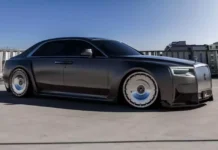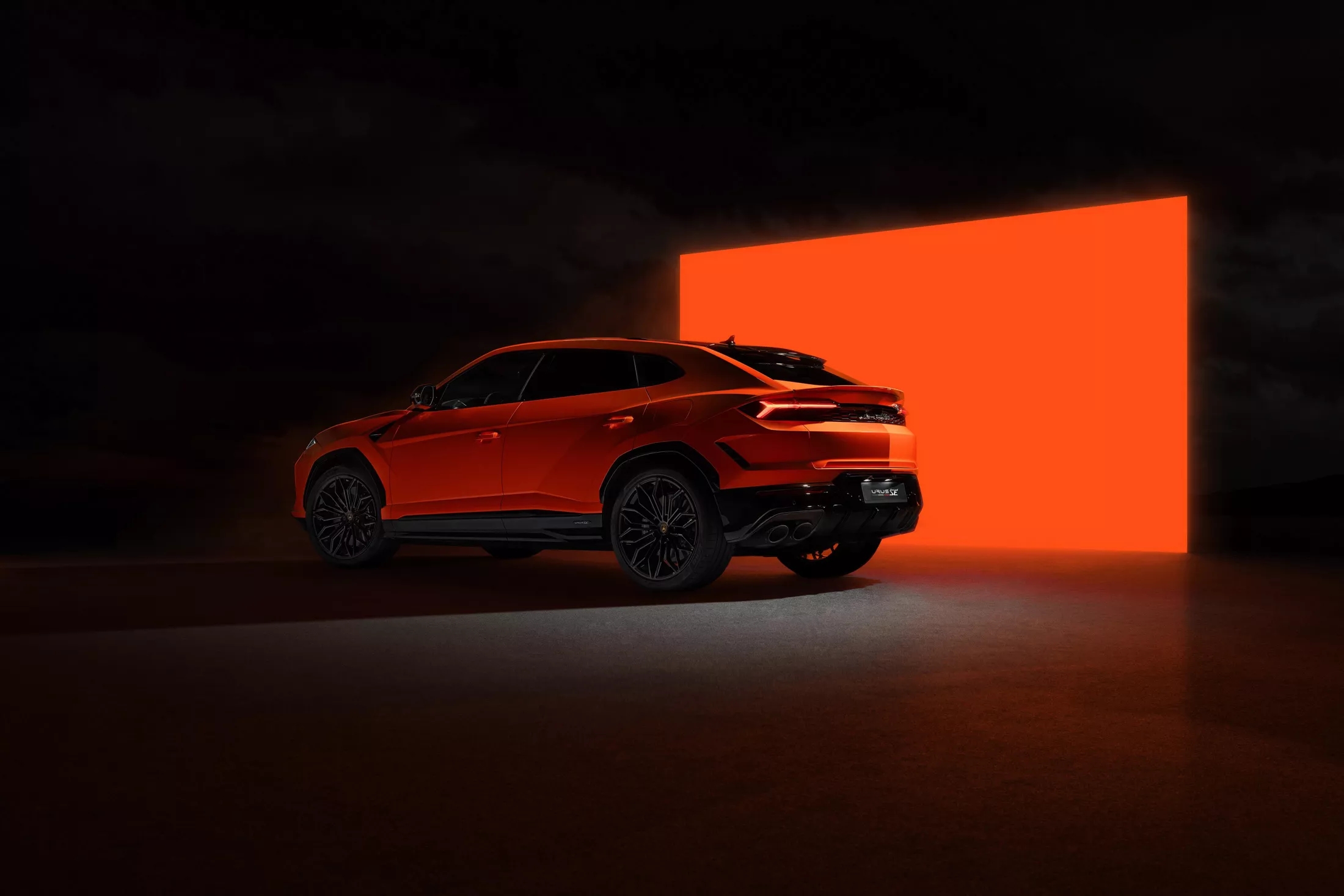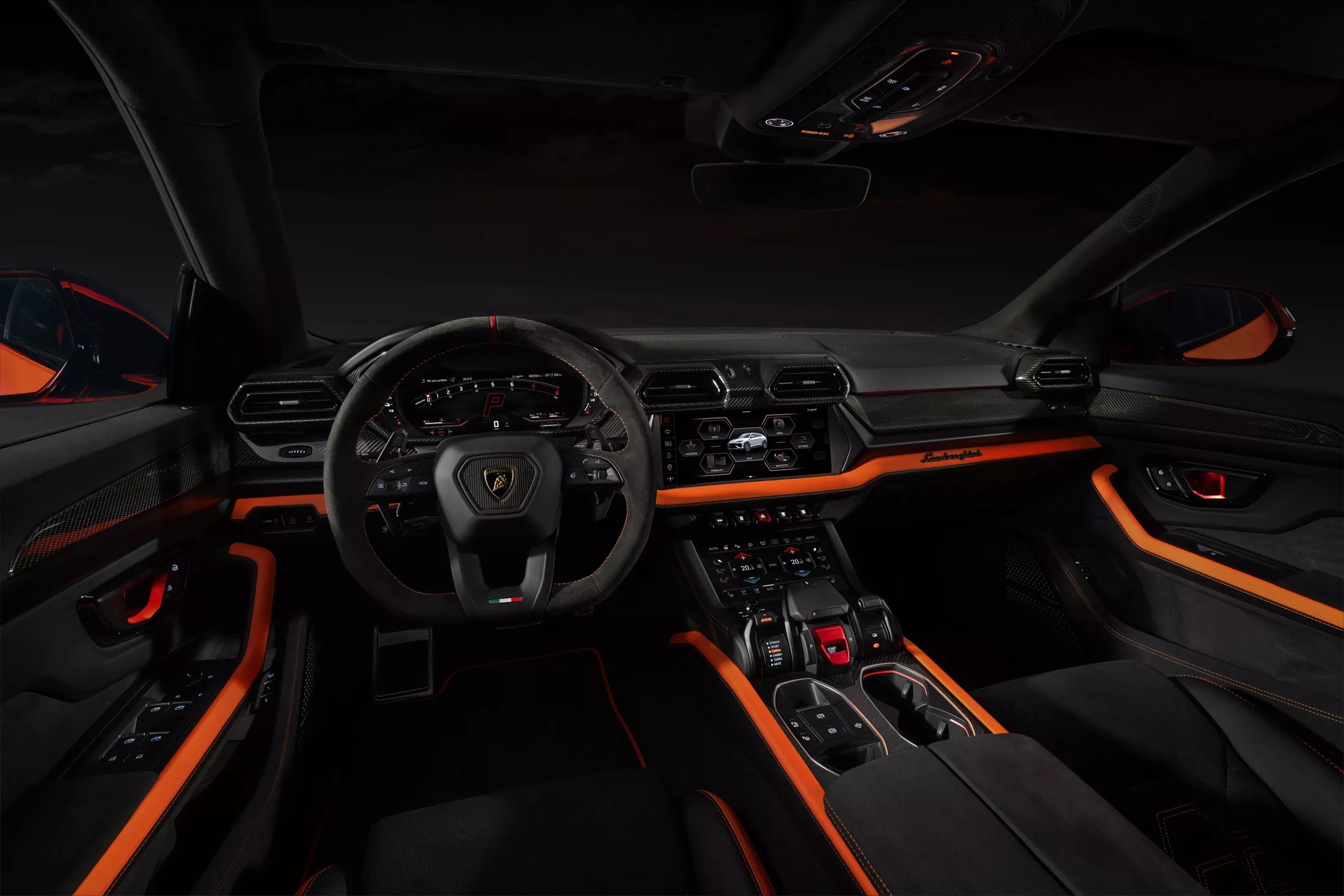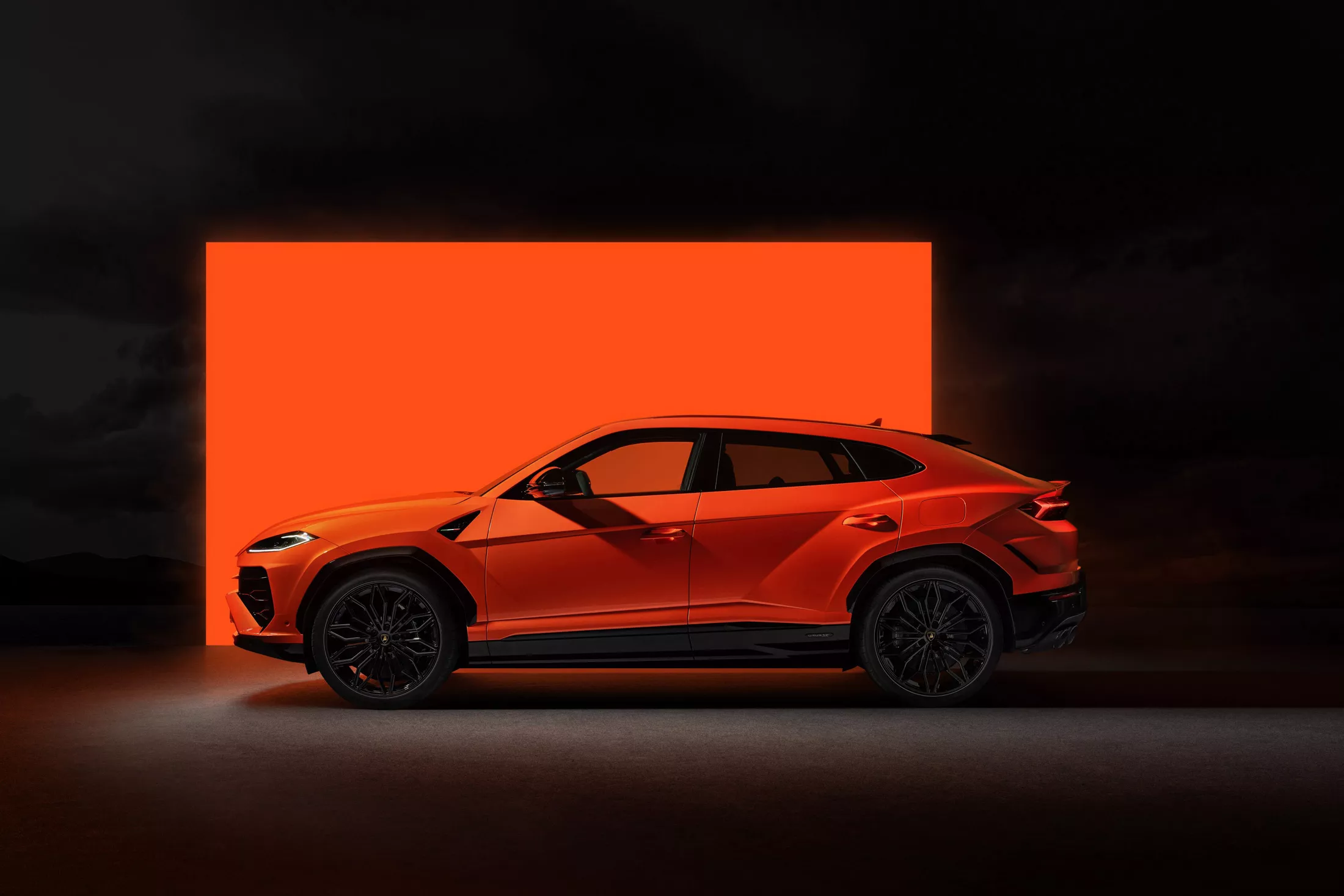The Lamborghini Urus SE combines a 612-horsepower twin-turbocharged V8 combustion engine with a 189-hp permanently excited electric motor sandwiched within its eight-speed transmission. The combo results in a 789-hp output, making the SE the most powerful Urus yet and enabling the SUV to hit 100 km/h in 3.4 seconds—0.1 second quicker than the 657-hp Urus S but marginally slower than the Performante.
The 25.9-kWh battery pack makes for a claimed electric range of 60 km, which is about half what the latest Range Rover PHEV can do but will still likely prove appealing, particularly in markets where financial incentives are tied to tax breaks for driving with zero emissions.
The Urus SE also debuts a new electro-hydraulic multi-plate clutch that provides variable torque distribution between the front and rear axles. Lamborghini says this works in conjunction with a new electronic rear differential to deliver “on-demand” oversteer. Ditching the outgoing car’s mechanical locking differential apparently saves 20 kg, although at 2540 kg, the hybrid is still 300 kg heavier than the gas-only model.
However, Lamborghini CTO Rouven Mohr says the SE should feel as quick as the Urus Performante but more agile and driver-focused when equipped with the same tires.
Updates to the exterior include a new hood that now flows into the redesigned grille, giving the nose a bit of Reventón flair, as do new LED headlights and a redesigned rear fascia with a blacked-out crossbrace connecting the taillights, once again providing a visual link to Lamborghini’s current crop of supercars. Also new are the Galanthus wheels, which measure 23 inches in diameter and wear a new P Zero tire from Pirelli.
Inside, there’s a larger 12.3-inch infotainment display, less boring-looking air vents (but still rather boring), new seat and console upholstery, and Lamborghini says it has changed the material on the dashboard to make the switchgear feel more mechanical and tactile.
The Urus SE is Lamborghini’s second plug-in hybrid, following the V12 Reventón supercar by a year, but it won’t be the last. Later this year, the Italian automaker will reveal the successor to the Huracán, which is also expected to feature plug-in power. And by 2028, Lamborghini will add a new third model line with the Lanzador crossover, which will be followed by an all-electric Urus.
Son Pham (Forum.autodaily.vn)







































![[CAR REVIEW] User feedback on the Toyota Corolla Cross HV after 1 year of use](https://vnauto.net/wp-content/uploads/2023/10/xehay-toycross-30082022-7-150x150.jpg)











